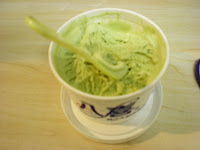Kelsey (the unofficial star contributor to Dynastea!) sent me this interesting article a while back, but I sort of forgot about it, and I'm only returning to it now as I'm gearing every possible effort toward procrastinating studying for finals.
In case you haven't the energy to read it, here's the two-sentence version: an entrepreneur by the name of An Yanshi has devised an interesting and expensive green tea--one fertilized by panda poo. In a way, he describes, it's a way of returning to the original meaning behind the Chinese character for tea, which combines "man," "grass," and "woods." Of course, this is particularly relevant for those of us who love both pandas and tea, and besides its appeal as a fun novelty drink item, there is a cool component of sustainability; if this isn't going green, I don't know what is.
So, hefty price tag aside, would you drink it? I mean, Camellia sinensis has to be fertilized somehow, right? My normal answer to almost anything with a picture of a cute panda on it would be yes, but I'm not entirely convinced of the return-to-the-natural-way argument for this drink. It's supposed to be a tea for the refined palate of a tea connoisseur, but despite Mr. An's words against the tea's classification as a novelty item, it still seems to be one. Note the number of zeros in that price and the claim that it'd be the world's most expensive kind of tea. There is the tremendous amount of nutrients that are supposedly present in the fertilizer and the fact that pandas are pretty darn endangered, but if the pandas chosen are only too happy to put up their end of the bargain on the order of kilos daily, it's difficult to say what's really driving up the price.
Picture from here.
































